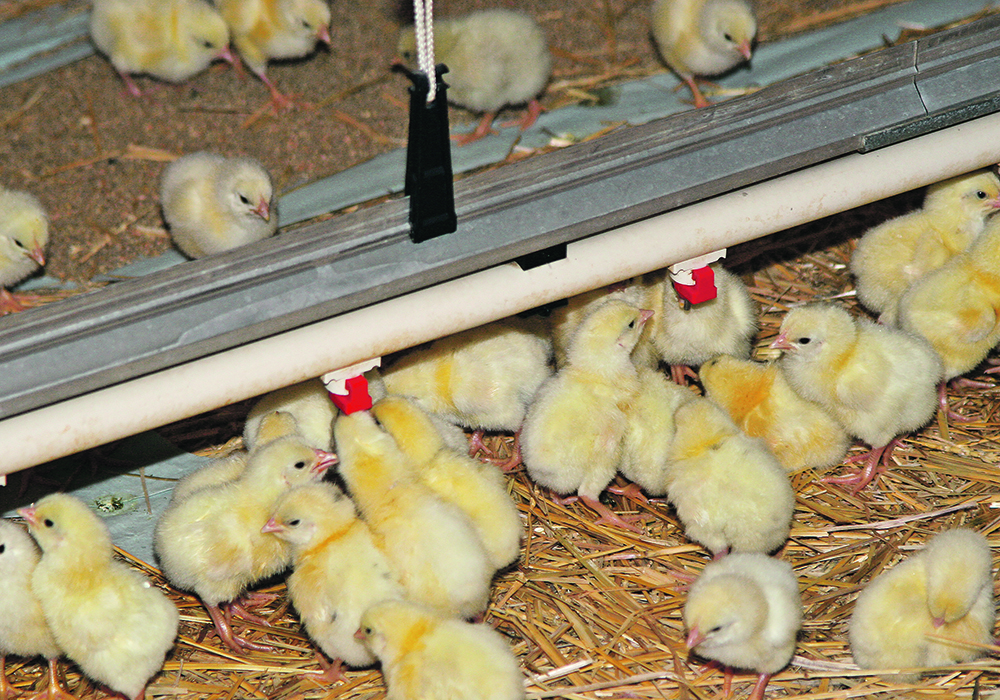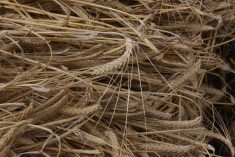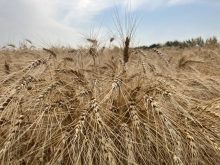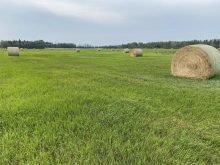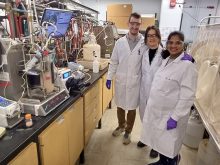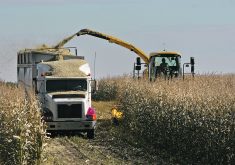The livestock feed industry is always seeking new sources of protein to deliver better production results and reduce farmer costs. With seed protein content commonly cited around 25 percent, hemp could fill that niche.
It’s a feed option that Alberta-based company AltaGreen hopes to see integrated into Canada’s poultry barns.
Hemp is rich in omega fatty acids, plant proteins and other phytonutrients linked to supporting bird health. This is particularly important as poultry production transitions away from preventive use of antibiotics.
“One of the things that becomes very apparent is that current feed does nothing to strengthen the immune system naturally,” said AltaGreen CEO and co-founder Doug Kirillo.
“In Canada, we have 2.5 to five percent mortality in chicks in their first 45 days and if you can reduce that by even one to two percent by naturally strengthening immune systems, that is significant.”
Kirillo also said some plant-based proteins, like soy, are high in estrogen, which can have negative health effects in humans if too much is consumed. This is not an issue with hemp, he noted. Product trials have also found that hemp has good feed conversion properties, so birds can eat less feed while putting on more weight.
Before the COVID-19 pandemic, Kirillo and his chief science officer were involved in a vertical farming project near Edmonton, growing kale and leafy greens, when they began experimenting with industrial hemp in hopes of making hemp oil. The pandemic put an end to their fresh produce sales, but they managed to maintain hemp research.
“We started by introducing products for the pet food and equine market,” says Kirillo.
That was a strategic decision. Those markets faced less rigorous regulation from the Canadian Food Inspection Agency because the meat of those animals is not bound for human consumption.
“We now have eight or nine SKUs (stock keeping units) in those areas with some small distribution and we’re looking to raise capital to increase manufacturing capacity or move to a licensing scenario.”
Hemp’s biggest opportunity, says Kirillo, is the livestock industry. Poultry is a major meat source for hundreds of millions of people around the world. Swine is also a big potential market and interest is growing from the aquaculture industry.
AltaGreen has been working with the University of Alberta and InnoTech Alberta to develop hemp-based feed formulations that can be adapted from poultry to swine and fish feed with only small modifications. They have three products for chicks, broilers and hens and will seek CFIA approval to move to market in Canada once the research is completed, a milestone expected in the next three months.
Once approval is in place, the company will take a phased-in approach to the Canadian market, said Kirillo. At the same time, the team is following up on international interest in its products, including from the United States, where the Food and Drug Administration has just recommended approval of hemp seed meal as a protein source in poultry rations.
Many farmers in Alberta, Ontario and Manitoba are already growing industrial hemp for the food market, or for materials markets like building materials and animal bedding.
Manitoba Harvest is among the largest local players in the hemp food market, selling hemp hearts, oil, protein powder and granola. Hemp Sense in Gilbert Plains got its start in bedding and, like AltaGreen, later dove into animal feed. Today, its products also include hemp meal and fibre-protein supplements for the equine market, pet food, cat litter and lawn care.
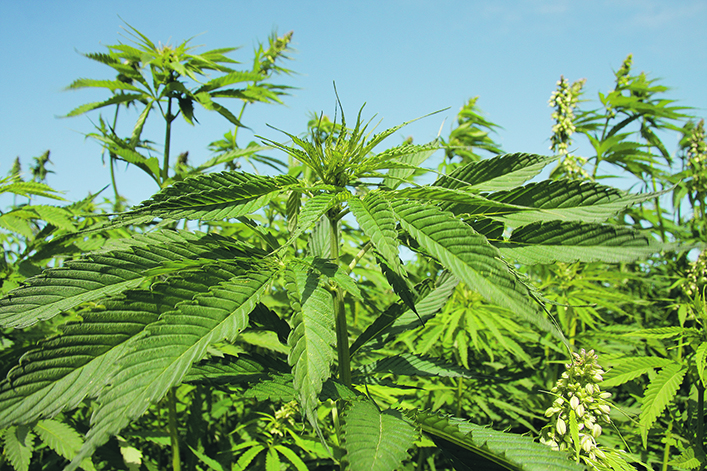
Fibre remains a less popular market than grain. In 2022, Health Canada reported just over 35,300 acres registered for grain use, compared to 13,700 acres cultivated for fibre. The same site can be registered for multiple uses.
Last year, hemp acreage climbed in Manitoba and nationwide. Canadian farmers harvested 54,600 acres, 13,400 of which were in Manitoba.
“There is no lack of hemp today in the Canadian market,” says Kirillo. “The supply chain is good here and many existing hemp producers are excited to get another avenue to sell their hemp.
“Hemp is also one of the best carbon sequestering plants in the world, and the offset with carbon credits will do nothing but increase the outlook for industrial hemp in Canada.”
The company has received funding from Natural Products Canada to help develop a business plan, a go-to-market strategy and an intellectual property strategy to support commercialization. They’re key elements that investors and granting agencies look for when making funding and investment decisions, notes Kirillo.



